Imagine You Are Building a House. The technology stack (in German, Technologie-Stapel) is the foundation of this house. A solid, well-thought-out foundation allows you to construct an impressive building that withstands the storms of time. Make the right choice, and you will be rewarded with an application that not only works but also excites!
From Performance to Costs: The Consequences of a Poor Tech Stack Decision
Choosing the right technology stack for web application development is crucial. An unsuitable stack can lead to numerous problems, while the right combination of technologies optimizes the development process and enhances the final product. Here’s a deeper look:
- Scalability Issues: A tech stack that is not designed for growth can limit your potential when your user base expands.
- Lack of Support: Some technology components may be outdated or have a weak community, making problem-solving difficult.
- Performance Problems: Slow loading times or frequent crashes can drive users away.
- Compatibility Issues: Not all technologies work well together. A poorly coordinated tech stack can lead to unexpected bugs.
- Increased Development Costs: An inappropriate tech stack can prolong development time, thus increasing overall costs.
What Is a Tech Stack – Definition?
A tech stack, often used synonymously with the term “technology stack,” is the backbone of any web application. It is the foundation on which everything is built and functions – from the first user interaction to the most complex data processing in the background.
- Front End: This is the user interface, what users see and interact with. Frontend technologies like HTML, CSS, and JavaScript come into play here. It is the shiny showroom of your digital product.
- Back End: A backend tech stack is the invisible core working behind the scenes. It includes servers, databases, and application logic. Programming languages and frameworks like Python, Ruby on Rails, or NodeJS manage the magic behind the curtain.
- Databases: This is where all data is stored—from user information to content. Databases like MySQL or MongoDB are essential to ensure that data is stored securely and efficiently and can be retrieved when needed.
- Development Tools: These tools help developers work more efficiently, review code, and ensure that everything runs smoothly.
Why Choosing the Right Tech Stack Matters – Economic Viability
Choosing the right technology stack goes far beyond technical aspects. It has a direct impact on the economic viability of a project. A well-chosen tech stack can not only reduce development costs but also increase the profitability of a web application. Here are some reasons why selecting the right tech stack is crucial for economic viability:
- Efficiency and Speed: A suitable tech stack allows developers to work faster and more efficiently. This reduces development time and, therefore, costs.
- Maintenance and Support: An active and well-supported technology stack ensures that regular updates and patches are available. This minimizes security risks and ensures that the application is always up to date.
- Scalability: As mentioned before, scalability is critical for success. A scalable tech stack enables the application to keep up with a growing user base without compromising performance.
- User Experience: The right technology selection can significantly improve the user interface and overall user experience. A positive user experience can lead to higher conversion rates and customer retention.
- Future-Proofing: Technologies are constantly evolving. A future-proof tech stack ensures that the application remains relevant and functional in the coming years.
- Integration and Expansion: A flexible tech stack allows for the seamless integration of third-party tools and services. This can be essential when adding new features or services.
The Most Popular Tech Stacks for Web Development in 2023
Technologies are evolving rapidly, and so is the technology stack. These tech stacks are not only popular among developers but have also left their mark on successful web frameworks. Below is an overview of outstanding technology stacks that dominated web development in 2023:
- Python and Machine Learning: Python has established itself as one of the leading programming languages, particularly in the field of machine learning. With frameworks like TensorFlow and PyTorch, developers can create powerful, data-driven applications.
- Ruby on Rails and PostgreSQL: Ruby on Rails remains a popular choice for web developers, especially in combination with the robust relational database PostgreSQL. This stack is particularly suitable for scalable web applications.
- React JS and RabbitMQ: React JS, a leading frontend library, combined with RabbitMQ, a message broker, enables the creation of reactive, real-time web applications.
- Angular JS and .NET: Angular JS, another leading frontend framework, paired with the .NET backend, provides a solid foundation for enterprise applications and complex web projects.
- Flutter for Web and Mobile: Flutter, originally known for mobile development, has also made a name for itself in web development. With its ability to develop for both web and mobile platforms, it offers developers an efficient way to create cross-platform applications.
The Most Popular Pre-Built Programming Frameworks
- LAMP for Traditional Web Development: The LAMP stack, consisting of Linux, Apache, MySQL, and PHP, has been a proven standard in web development for years. Despite the introduction of new technologies, LAMP remains a reliable and widely used choice for many developers and companies.
- MEAN for Full-Stack JavaScript Solutions: The MEAN stack, consisting of MongoDB, Express.js, AngularJS, and Node.js, provides a complete JavaScript solution for web application development. By using JavaScript in both the frontend and backend, developers can enjoy a consistent and efficient development experience.
- MERN as a Modern Alternative to MEAN: The MERN stack replaces AngularJS with React, making it a popular choice for developers who prefer React’s flexibility and component-based architecture. Like MEAN, MERN also utilizes MongoDB, Express.js, and Node.js to ensure a coherent full-stack JavaScript development.
Things to Consider When Choosing a Tech Stack
Choosing the optimal software stack is more than just technology; it is a strategic decision. Here are the key factors to consider:
- Project Requirements: Every project has its own specific requirements. A simple blog may not need the same software stack as a complex e-commerce platform. Understand the needs and goals of your project before making a decision.
- Team Expertise: It is important to choose at least one solution stack that your development team is familiar with. Learning a completely new technology takes time, costs money, and increases the risk of errors.
- Community Support: A tech stack with an active community can be invaluable. A strong community usually means better documentation, more resources, and faster problem-solving.
- Scalability: Think about the future. Will your tech stack be able to grow with your business? A scalable tech stack can adapt to increasing user numbers and additional features.
- Performance: The speed and responsiveness of your application are critical for the user experience. A slow tech stack can drive users away and impact the success of your web application.
- Security: In an era where data protection and security are a priority, it is important to choose a tech stack with robust security features.
- Cost: Some technology components can be expensive to license or operate. Consider the long-term costs, not just the initial development costs.
- Future-Proofing: Technologies are constantly evolving. A tech stack that is relevant today could be outdated tomorrow. Choose technologies with a future that are regularly updated.
Checklist for Choosing the Right Tech Stack for Your Web Application
Before diving into the details, remember: A tech stack is not just a set of technologies but the foundation of your application. It should not only meet your current requirements but also be flexible enough to handle future challenges.
1. Time-to-Market
Time-to-market refers to the period from the initial product idea to its actual market launch. In the digital world, where trends and technologies change rapidly, this timeframe can make the difference between a product’s success or failure. A shorter time-to-market can give you a competitive advantage by allowing you to respond faster than your competitors to market changes or customer needs.
- Development Efficiency: Some technologies and frameworks enable faster development, especially when they are well-documented or have a wealth of available resources and libraries. Frameworks that support full-stack solutions can accelerate the process as they are suitable for both frontend and backend.
- Code Reusability: Technologies that allow code reuse can significantly speed up software development. This is particularly useful if you plan to create both a website and mobile apps.
- Open-Source and Community Support: Active open-source contributions and a strong community can accelerate development. You benefit from previously solved issues, available plugins, and active discussions on best practices.
- Third-Party Integration: In many cases, web applications need to integrate with other services or platforms. A tech stack that facilitates seamless integrations with minimal additional development effort can significantly shorten the time-to-market.
2. Scalability
Scalability is the ability of a web application to function efficiently as the number of users or data volume increases. A scalable tech stack ensures that your application continues to run smoothly, even with growing traffic or increased data demands.
- Vertical vs. Horizontal Scaling:
-
- Vertical scaling means adding more resources (e.g., more RAM or CPU) to a single server.
- Horizontal scaling involves adding more servers to the infrastructure.
- Some technology stacks are better suited for one type of scaling over the other.
- Database Scaling: Depending on the database technology you use, there are different scaling strategies. For example, MongoDB offers built-in sharding mechanisms for horizontal scaling.
- Stateless Applications: Stateless applications, which do not store user information between sessions, are generally easier to scale, as each request can be processed independently.
- Microservices Architecture: This architecture allows different parts of an application to be scaled independently, often leading to more efficient scalability.
3. Availability and Costs of Human Resources
The choice of a tech stack affects not only the technical side of your project but also the human aspect. The availability of developers familiar with the chosen technologies can significantly impact the success of your project.
- Market Demand: Some programming languages and frameworks are more popular than others. This can influence recruitment costs and the time required to assemble a competent team.
- Training and Further Education: If you opt for a less common or newer tech stack, you may need to invest in training your team.
- Community and Support: An active community can reduce the need for specialized resources. If there is a large community willing to help with issues, this can ease the burden on your internal team.
- Costs: Developer salaries can vary depending on their expertise in specific technologies. Some specialized skills can be more expensive than others.
4. Is Your Tech Stack Future-Proof?
The technology of today can become obsolete tomorrow. In this dynamic tech world, your tech stack must not only meet current needs, but also be prepared for future innovations. A future-proof tech stack is key to sustainable business success.
- Adaptability: The ability to integrate new technologies or frameworks without overhauling the entire stack is crucial. This allows your company to quickly adapt to market changes or new technology trends.
- Long-Term Vision: Some technology components may be short-lived trends. Choosing technologies with a clear roadmap and a long-term vision for their development and support is important.
5. Avoiding Overcomplication
While chasing the latest and greatest technologies may be tempting, it is often more sensible to focus on the essentials. An overly complex tech stack can complicate not only development but also maintenance.
- Simplicity as a Guiding Principle: Choose technologies directly contributing to your goals. Every additional technology component should provide clear added value rather than simply increasing complexity.
- Maintaining Consistency: A consistent tech stack, where all components interact well with each other, can shorten development time and reduce errors. This also means avoiding constant switching between different programming languages or frameworks.
Preferring Proven Technologies: Using the latest framework or programming language is not always necessary. Often, established technologies provide a more stable and reliable solution for web application development.
Tech Stacks Used in Popular Applications
Choosing the right tech stack is not just about technical requirements but also about market acceptance. Some tech stacks have proven to be particularly powerful and reliable in the industry and are therefore used in many successful applications. Let’s have a look at some prominent technology services:
- Airbnb: This company uses a combination of Ruby on Rails for the backend and ReactJS for the frontend. This combination allows them to offer a fast and reactive user interface that millions of users worldwide appreciate.
- Netflix: Netflix relies on various technology services, including Java and JavaScript for the backend and ReactJS for the frontend. This enables them to process millions of requests per second while ensuring a seamless user experience.
- Instagram: Instagram uses Python with the Django web framework for its backend. This, combined with React Native for mobile applications, allows them to operate one of the world’s most frequently used social media platforms.
- Slack: Slack, the popular business communication tool, uses PHP combined with the LAMP stack (Linux, Apache, MySQL, PHP) for its backend and Electron for its desktop applications.
Conclusion
The choice of the right tech stack is crucial for the success of a web application. It is not just about following the latest trends or the most popular technologies but selecting the stack that best fits the specific requirements and goals of the project. With the right combination of programming languages, frameworks, and technology services, developers can create powerful, scalable, and user-friendly applications that stand the test of time.



